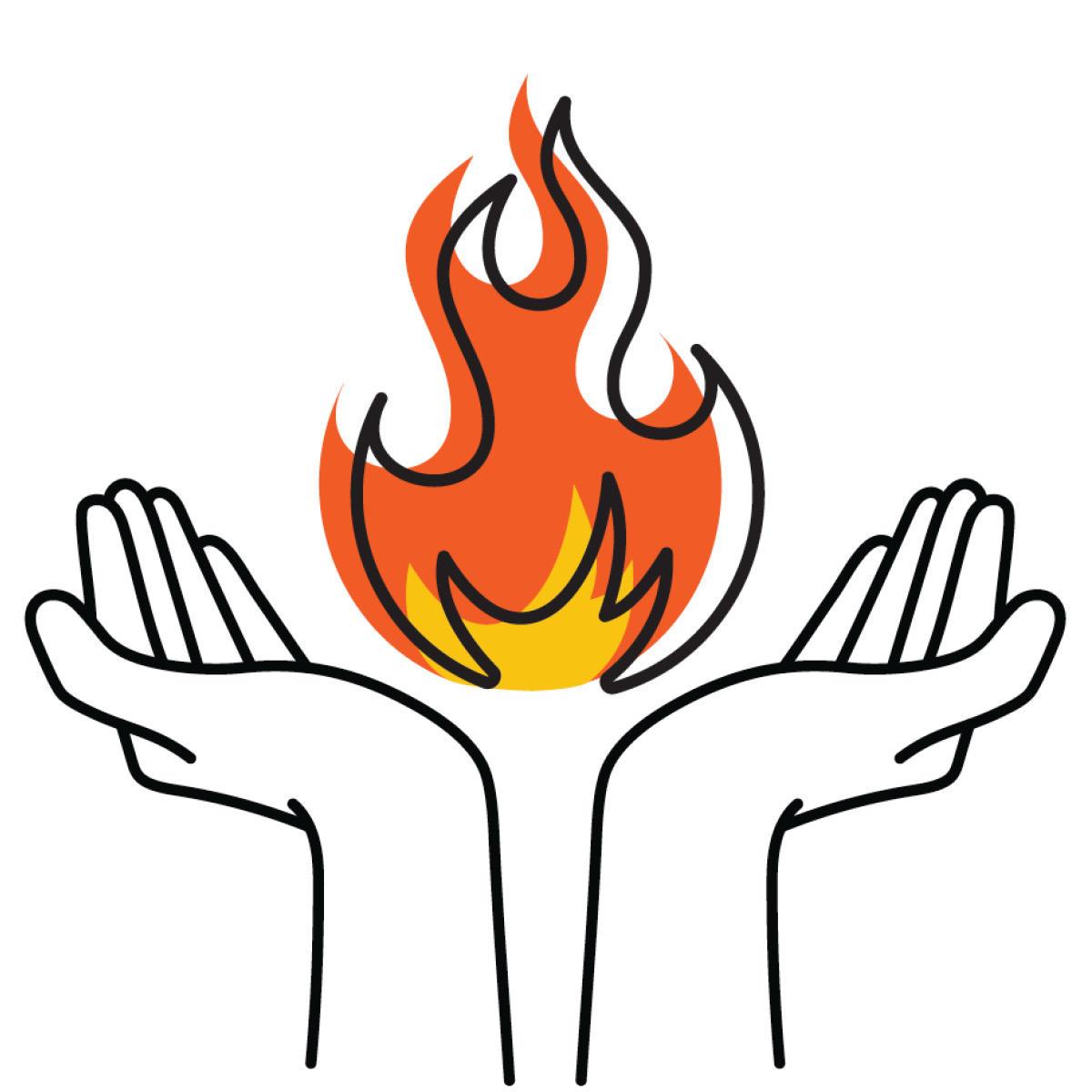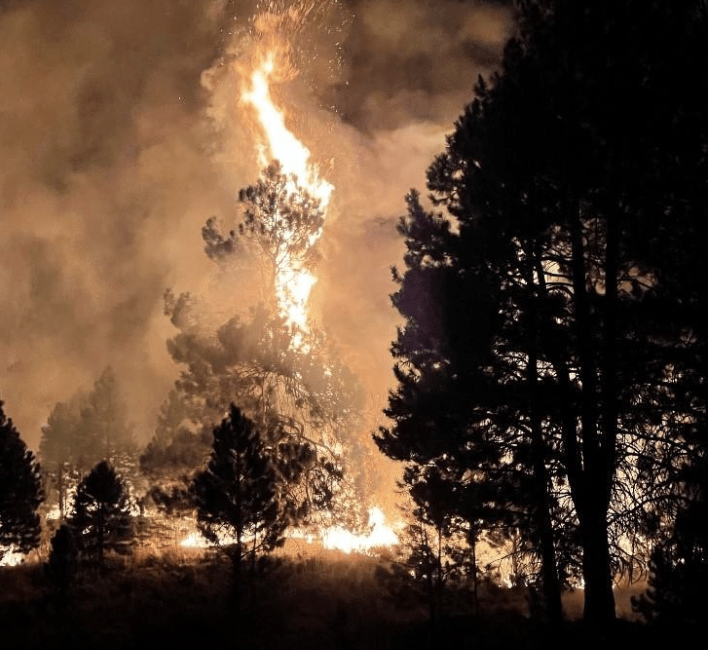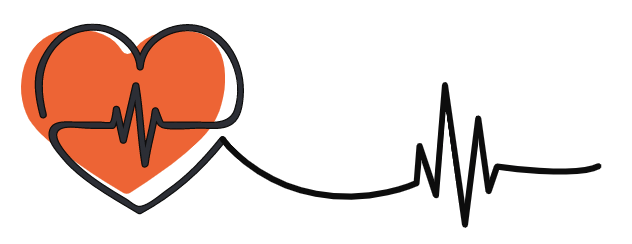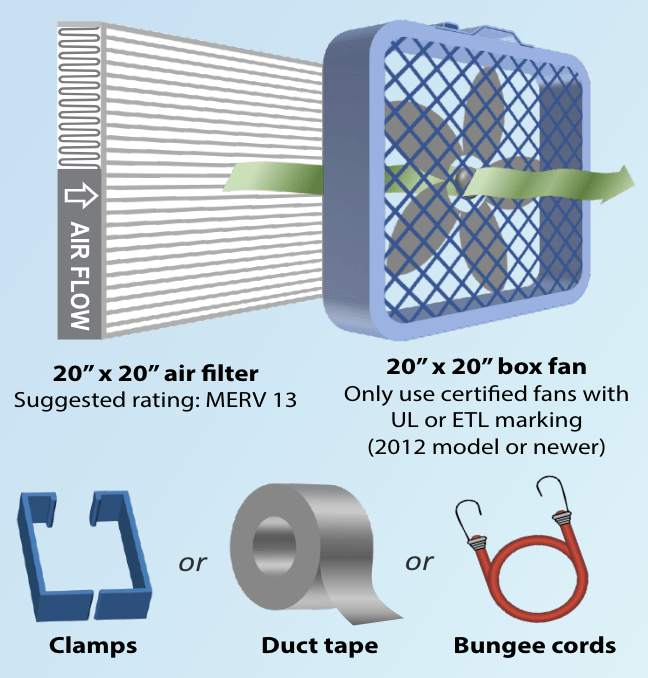The four sections of this booklet provide
more details on the ways we can prepare:
Wildfire is not just a concern for people in the mountains and forests. In rural and urban areas alike, we are experiencing fire events and smoke. Wildfire is a fact of life for people living in Oregon.But it isn’t all bad news. The future of our families, homes and communities confronting larger and more intense wildfires is in our hands. We can prepare for wildfire with simple actions and build our resilience to deal with potentially negative consequences.
Here’s how.
Before a wildfire ever comes, we can become informed about evacuation levels; make an evacuation plan; create an emergency supply kit; and learn where to get information and resources. We can remove plants and materials that burn easily around our homes and businesses. We can make it difficult for embers from a wildfire to collect and ignite on or near our home. When the fire comes, we can know how to protect ourselves from smoke and maintain our mental health.This short, simple booklet is designed to give you ideas on preparation and planning that you can do right now. It contains helpful tips, information and resources. Reach out to local organizations and your community for help when needed.We aren’t helpless. We can make our communities more resilient.
It starts here.
Make a Plan
- Taking simple actions now can help reduce wildfire impact on you and your community.
- Signing up for emergency notifications and having a wildfire emergency plan play a big part in helping to keep you and your family safe.
Wildfires can be emotionally distressing and can threaten life, livelihoods and property. Fortunately, there are things you can do to protect yourself and those you love.
What can you do?
You are invited to do any (or all!) of the actions below.
Sign up for your local emergency alert system.
Get lifesaving alerts and instructions during emergencies. You can sign up at the OR-Alert website and select the notifications you want to receive. Most county alerts are available in Spanish.
When a wildfire is near and you feel unsafe, don’t wait for an evacuation order —evacuate immediately!
Be informed about evacuation levels
Evacuation orders are typically given by local sheriff's deputies, police or state police. Oregon evacuation levels are:
- Level 1: Be ready — Prepare, monitor and pack your valuables
- Level 2: Be set — Get set to evacuate at a moment’s notice
- Level 3: Go now! — Leave immediately
Make a plan
You are encouraged to create an evacuation plan that includes:
- A designated emergency meeting location away from the wildfire area.
- Multiple escape routes.
- Pets and large animals.
- Someone you can call or message who lives outside of the affected area.
It’s a good idea to practice the plan before a wildfire happens.
Prepare an emergency supply kit
Keep an emergency supply kit in an easy-to-grab location like a garage. An emergency supply kit may include:
- At least a three-day supply of nonperishable food and water per person (and pet).
- Prescriptions or special medications.
- A change of clothing.
- Sanitation supplies like a toothbrush.
- A charger for cell phones.
- Copies of important documents. These may include a driver’s license, Social Security card, passport, titles, insurance policy information and tax records.
If you are impacted by a wildfire, you may be eligible for:
- Programs run by state and local agencies.
- Aid from groups like the Red Cross.
- Cash assistance and other short-term services from volunteer and church groups. Services can include crisis counseling or disaster legal services.
This assistance is offered to U.S. and non-U.S. citizens and residents alike.
Insure your home and belongings
You can receive financial assistance after a wildfire if you have home or renter's insurance. Ensure you have the right amount and types of insurance coverage by conducting an annual review with your insurance agent or company. Make an inventory of your belongings by taking photos or videos and writing a brief description of the contents of your home.
Authors:
Carrie Berger, Fire Program Manager
Kara Baylog, Program Coordinator
Forestry & Natural Resources Extension Oregon State University.
Prepare Your Home
- Practical steps you can take to reduce fire risk to your home and the area around it
The number and size of wildfires across the western United States have dramatically increased, affecting many communities. Thankfully, there are basic and affordable actions you can take to protect your home.
Why homes burn
Embers are a major reason why homes are destroyed during a wildfire. Embers are pieces of burning matter from the fire. Wind can carry embers far away from the active fire area. If these embers land on materials that are burnable on or near a house, the home will be at risk of burning.
Preparing your home and the area around your home for wildfire and embers can help protect you and your community.
Start with your home
The chances that your home makes it through a wildfire depend on the materials used to build it and the burnable material around it. Here are some tips for basic and affordable actions you can take around your home.
- Walk around the outside of your home. What do you see? Are leaves and needles piling against your home, under the deck or in the gutters? Where burnable material collects, embers will also collect and ignite your house. Regularly remove this material from the area outside your home, including your roof and gutters.
- Try to keep anything that might burn from touching or hanging over your home. Are plants or landscape materials such as bark mulch touching your home? Are tree branches hanging over your roof? Trim plants and trees and use nonburnable landscape materials like rocks and concrete pavers in place of wood and bark mulch.
- Remove any other burnable materials from the outside of your home. Wood piles, wood patio furniture or doormats can also catch fire.
- Use fire-resistant building materials. Affordable fire-resistant building materials and home maintenance supplies may be available at places like Habitat forHumanity ReStores, businesses or local organizations.
The area around your home
After assessing your home and its immediate area, check other areas around it like your yard.
- Keep grass mowed and all plants watered.
- Remove dead or dried plant materials, including fallen needles and leaves.
- Trim low tree branches.
- Provide spacing between shrubs and trees. Don’t let small trees or shrubs grow right under big trees or in a tight row or hedge. Fire can easily travel from plant to plant when they are close together.
- Choose fire-resistant plants. These types of plants have characteristics that make them harder to burn. For example, they have leaves rather than needles and are not oily or waxy. However, even fire-resistant plants can burn if they are not maintained in a healthy condition or have been growing without water for a long time.
- Talk with your neighbors. Encourage your neighbors to protect their homes and property. Improve your situation by working together.
Access to your home
Suppose a wildfire does occur in your community and is threatening your home. In that case, firefighters will need access to your home while maintaining their safety. Here is what you can do to help make this easier for firefighters:
- Ensure street names and house or apartment numbers are clearly marked.
- Be sure your driveway is clear of vegetation, including branches, shrubs and trees. If vegetation hangs too low or crowds the sides of your driveway, a fire truck could be unable to drive in.
- Evacuation orders are typically given by local sheriff’s deputies, police or state police. However, if a firefighter tells you to evacuate, you should do so for your safety and the safety of the firefighters.
Preparing your home and the surrounding area before a wildfire can help reduce the risk of flames or embers destroying your home. Some of these actions can be accomplished in a few hours, while some can take more time, effort or money.
If you need help, ask neighbors, a property manager, friends, community groups, city government or your local fire department. Organize a work party to help each other prepare. If you rent a house or apartment, talk to the property manager about what they can do to keep you, your family and your belongings safe from wildfire.
Resources
- Frequently asked questions about defensible space, Oregon Office of the State Fire Marshal,
- Defensible space tips to protect your home from wildfire, Oregon Office of the State Fire Marshal
- Habitat for Humanity ReStores
- Fire-resistant Plants for Home Landscapes, Oregon State University Extension
Authors:
Aaron Groth, Coastal Oregon regional fire specialist and Assistant Professor
Carrie Berger, Fire Program Manager
Emily Jane Davis, Interim Fire Program Director and Associate Professor
Kara Baylog, Program Coordinator
All of Forestry & Natural Resources Extension, Oregon State University.
Care for Your Mental Health
- Tools to support yourself and others before, during and after fires
Experiencing a wildfire can affect us physically, mentally and emotionally.It is estimated that 24%–41% of wildfire survivors experience mental health challenges. People often report grief, anxiety, anger, worry and sadness about what happened.
Victims of wildfire may have witnessed homes burning and felt fear for their life or the life of a loved one. Many experience financial losses and property damage. Some may feel a lack of support from family, friends or government organizations.
Here are a few tips and tools to support your mental well-being if you are affected by wildfire. This is not a complete list. If you or someone you know is experiencing mental health challenges due to wildfire, please contact a behavioral health care provider or other services for support.
Before: Be ready
Planning ahead for a fire can help you feel more prepared during an emergency and give you tangible action steps to take.
- Learn how to prepare your family, home, important belongings and pets to evacuate. When you evacuate, pack items to support your mental health such as a book, game, soothing comfort foods, fidget toys, stuffed animals, a soft blanket, journal or photographs of loved ones.
- Talk with your children about preparing for wildfires and what to expect. Help them prepare their important items for evacuation and practice your plans with them.
- Clean up the outside of your home to get rid of flammable material like dead leaves and dry wood.
- Find out what you can do if you lose your home in a wildfire, including where you might go for shelter, food, supplies or where to get help with paperwork.
Ask friends, co-workers and family members about what they are doing to prepare for fires. Share any worries, fears or uncomfortable emotions that you may be experiencing. This can help you process those emotions with people you trust, get more ideas for your preparedness plan and feel connected to others who may be experiencing the same thing.
During: Take care
- Check accurate local information sources such as county emergency management or the county sheriff’s office to stay updated on the fire status and evacuations.
- If you are evacuated, try to find a safe place where you can get food, water, rest and medical care if needed for yourself, your family and your pets.
- Practice self-care. It is normal to go into“survival mode” and feel “off” during an emergency. It can also be hard to do what you would typically do to take care of yourself. Even if it may seem difficult to practice self-care during a fire, it is essential. Practice deep breathing and use calming self-talk.
- Keep a journal, try to maintain a schedule, take breaks from the news and social media, get enough sleep and reach out to others.
- Help children use these strategies too, and provide opportunities to play, talk or do other activities that they enjoy.
After: Know the signs
Wildfires affect everyone differently. Signs of emotional distress after a fire could include:
- Eating or sleeping too much or too little
- Nightmares
- Flashbacks
- Angry outbursts
- Being easily startled
- Worrying or feeling guilty
- Restlessness and wariness
- Difficulty remembering things
- Sadness and depression
- Pulling away from people or things
- Having no or low energy, feeling tired
- Feeling afraid
- Unexplained aches and pains, like constant headaches or stomachaches
- Excessive smoking, drinking or abusing drugs or prescription medications
- Thinking of hurting or killing yourself or someone else
What to do
Because everyone experiences different impacts from wildfires, there is also a lot of variety in what tools and strategies work for people and how long it takes to feel better. Consider which of these approaches makes the most sense for you.
- Connect with others about your feelings to help get through a tough time. Talk to family, friends, coworkers, church members, other wildfire survivors and peer support groups.
- Think about other times when you had to cope with something difficult and what helped you then. Use those coping skills now.
- Seek support from professionals who are trained in dealing with what you are experiencing.
- If you are also experiencing other health issues, visit a doctor or clinic. Physical and mental health issues can be related to each other.
- Try self-care exercises like walking or exercising, eating well, meditation, deep breathing exercises, listening to music, or practicing a hobby or creative activity.
Be prepared for emotional distress around the event’s anniversary and other triggers. Many people experience renewed feelings of fear, anxiety and sadness around the anniversary of a wildfire. Certain sounds, smells or sights can also take people back to the wildfire or trigger fear of it happening again. Mental health professionals can help you identify healthy coping strategies.
If your children are experiencing mental health challenges, look for resources that may help them within their school or community groups.
If you are having an emergency, dial 911.
Resources
- Suicide and Crisis Helpline: call or text 988.
- Disaster Distress Helpline: 1-800-985-5990 or text "TalkWithUs" to 66746.
- National Suicide Prevention Hotline: 1-800-273-TALK (8255) - press 1 for veterans, 2 for Spanish
- David Romprey Oregon Warmline: 1-800-698-2392
- National Substance Abuse Treatment: 1-800-662-HELP (4357) or online
- For youth, Oregon YouthLine: Teen-to-teen crisis line, text teen2teen to 839863 or 877-968-8431.
- Mental health resources in Oregon, by county
- Survival Basics: Stress Less
- Mental health information for Latinx/Hispanic communities; the bottom of the page lists resources.
- Oregon Wildfire Response and Recovery: 833-669-0554
Authors:
Emily Jane Davis, Interim Fire Program Director and Associate Professor
Forestry and Natural Resources Extension
Dusti Linnell, Associate Professor
Extension Family & Community Health
Kara Baylog, Program Coordinator
Forestry & Natural Resources Extension
Oralia Mendez, Workforce Development and Community Programs Manager, Oregon State University Center for Health Innovation
Protect Yourself from Wildfire Smoke
- You can protect yourself and your family by preparing for a wildfire smoke event.
- If you or your family have been exposed to smoke and are experiencing severe symptoms, like difficulty breathing or chest pain, call 911 or go to the emergency room immediately.
Wildfire smoke is a mix of gases, water vapor and small particles from burning trees, plants, buildings and other material. Breathing in wildfire smoke can hurt your health. Older adults, children, pregnant women and people with asthma, lung disease, or heart disease are especially at risk.You can take simple steps now to protect yourself and your family from wildfire smoke.
How can wildfire smoke affect you?
Particulate matter, or PM, is a mix of tiny solid particles and liquid droplets in the air we breathe. Some particulate matter, like smoke, dust or dirt, is large enough to see. Fine particulate matter (PM2.5) is so tiny — narrower than a single hair from your head — it passes through the nose and throat and enters the lungs. Once inhaled these particles can affect the lungs and heart and cause serious health effects.
Wildfire smoke can also cause:
- Watery or dry eyes
- Persistent cough, phlegm, wheezing, scratchy throat or irritated sinuses
- Headaches
- Fatigue
- Mental health-related effects like depression or anxiety
- Shortness of breath, asthma attacks or lung irritation
- Irregular heartbeat or chest pain
- Heart attacks
What is the Air Quality Index?
The Air Quality Index is a tool for reporting daily air quality. AQI values range from 0 to 500. The higher the number, the greater the level of air pollution and the greater the health concern. When AQI values are above 100, air quality is unhealthy for sensitive groups. Above 150, it is harmful for everyone. It’s a good idea to stay informed about air quality levels during a wildfire to limit your exposure to smoke.
Do your best to be informed about air quality in your community. If you have a smartphone or a tablet, you can download the free OregonAir app. This app uses smiling or frowning face emojis to show air quality across the state.
| Daily AQI color | Values of index | Levels of concern |
|---|---|---|
| Green | 0-50 | Good - Air quality is satisfactory, and air pollution poses little or no risk. |
| Yellow | 51-100 | Moderate - Air quality is acceptable. However there may be a risk for some people, particularly those who are unusually sensitive to air pollution. |
| Orange | 101-150 | Unhealthy for sensitive groups - Members of sensitive groups may experience health effects. The general public is less likely to be affected. |
| Red | 151-200 | Unhealthy - Some members of the general public may experience health effects; members of sensitive groups may experience more serous health effects. |
| Purple | 201-300 | Very unhealthy - Health alert: The risk of health effects is increased for everyone. |
| Maroon | 301+ | Hazardous - Halth warning of emergency conditons: Everyone is more likely to be affected. |
Prepare now to reduce your health risk from wildfire smoke
If you are part of a sensitive or at risk group, check with your doctor or nurse about what you need to do to protect yourself from wildfire smoke.Stay indoors and minimize outdoor activity as much as possible when the air quality is poor.Use an air cleaner like a high-efficiency particulate air (HEPA) filter at home. Or, consider a “do-it-yourself” option*. You can make a DIY air filter by attaching a furnace filter to a box fan. For safety reasons, turn off the DIY filter when you leave your home.Consider setting up a cleaner air space where you live by following these general guidelines:
- Choose a room to be your cleaner air space.
- Prevent smoke from entering the room (close the windows).
- Keep the room cool by using fans or an air conditioner.
- Filter the air in the room with an air cleaner or DIY air filter.
- Avoid activities in your home that create smoke or other particles (likeburning candles, vacuuming, frying food, etc.).
- Spend as much time as possible in the cleaner air room.
If you cannot create a cleaner air space in your home, goto cleaner air shelters and spaces in communities such as churches and libraries.
DIY air filter*
Materials needed
- 20” x 20” air filter - Suggested rating: MERV 13
- 20” x 20” box fan - Only use certified fans with UL or ETL marking (2012 model or newer)
- Clamps or duct tape or bungee cords
Assembly
- Attach the air filter to the back of the box fan using clamps, duct tape or bungee cords.
- Check the filter for the direction of the air flow (marked on the side of the filter)
- Replace filters when dirty.
*Do it yourself at your own risk. Oregon State University is not liable or responsible for any damage or loss from making an air filter at home or for your use of this information.
Credit: AirNow. Learn about box fan safety tips.
Are you an agricultural, general industry, construction or forest worker?
Understand your rights in the event of exposure to unhealthy or hazardous levels of wildfire smoke. The OccupationalSafety and Health Administration requires employers to provide training and approved filtering face piece respirators.
Resources
- Frequently asked questions about wildfire smoke and public health
- Protecting Indoor Air from Wildfire Smoke
- Oregon Smoke Information blog in multiple languages
- Air Quality Index Basics
- Air quality monitoring map
- Do it yourself (DIY) air filter
- Key requirements: Oregon OSHA’s permanent rules for protection from wildfire smoke
Trade-name products and services are mentioned as illustrations only. This does not mean that the Oregon State University Extension Service either endorses these products and services or intends to discriminate against products and services not mentioned.
Authors:
Carrie Berger, Fire Program Manager
Kara Baylog, Program Coordinator
Forestry & Natural Resources Extension, Oregon State University
Graphic design: Christina Friehauf















